What's New
Displaying results 521 - 530 of 4913
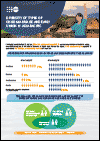
Resource | Fact Sheets,
In the Asia and Pacific region, 23 million adolescents aged 15-19 years are currently married or in union. Child marriage and early union (formal or informal, before the age of 18 years) is common throughout much of the region, with the highest prevalence in South Asia and some Pacific countries. The legal age of marriage should be 18, and all countries should enact legislation to prohibit forced marriage and remove exemptions that allow nonconsensual child marriage. However, treating all unions under the age of 18 years as forced and invalid can have harmful consequences. Enforcement of laws can cause harm to the girls we are intending to protect. Understanding the different forms of early marriage and union in the context of adolescent development and agency is critical to ensuring the implementation of child marriage legislation does not cause harm.

Resource | Publications,
Since its launch, GLASS has expanded in scope and coverage and as of May 2021, 109 countries and territories worldwide have enrolled in GLASS. A key new component in GLASS is the inclusion of antimicrobial consumption (AMC) surveillance at the national level highlighted in this fourth GLASS report.
The fourth GLASS report summarizes the 2019 data reported to WHO in 2020. It includes data on AMC surveillance from 15 countries and AMR data on 3 106 602 laboratory-confirmed infections reported by 24 803 surveillance sites in 70 countries, compared to the 507 923 infections and 729 surveillance sites reporting to the first data call in 2017.
The report also describes developments over the past years of GLASS and other AMR surveillance programmes led by WHO, including resistance to anti-human immunodeficiency virus and anti-tuberculosis medicines, antimalarial drug efficacy.
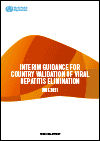
Resource | Publications,
WHO has developed this interim guidance for countries and other stakeholders seeking validation of elimination of viral hepatitis as a public health problem, with a specific focus on hepatitis B virus (HBV) and hepatitis C virus (HCV). It provides a global framework for the processes and standards for validation of elimination, and overall proposes the use of absolute impact targets to validate elimination at the national level (instead of, although equivalent to, the relative reduction targets originally defined in the 2016 GHSS) in combination with a set of programmatic targets.
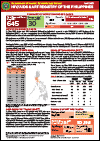
Resource | Fact Sheets,
In May 2021, there were 645 confirmed HIV-positive individuals reported to the HIV/AIDS & ART Registry of the Philippines (HARP) and were accounted to the total (86,617) reported cases since January 1984. Moreover, 16% (104) had clinical manifestations of advanced HIV infection at the time of testing. Ninety-four percent (607) of the reported cases were male. Of the total male cases, 2% (12) reported their gender-identity as female (transgender women) at the time of testing. Further, half of the cases (50% or 324) were 25-34 years.

Resource | Fact Sheets,
The 2021-2026 Global AIDS Strategy has bold and critical new targets on realizing human rights, reducing stigma, discrimination and violence and removing harmful punitive laws as a pathway to ending inequalities and ultimately ending AIDS. To aid in the scale up of interventions to remove these societal barriers, UNAIDS has produced a series of fact sheets on human rights in various areas, highlighting the critical need to scale up action on rights. They are a series of short, easy to digest and accessible documents outlining the latest epidemiology, the evidence of the impact of human rights interventions, the latest targets, and international guidelines, recommendations and human rights obligations relating to each topic. Fact sheets released in June 2021: HIV criminalization, HIV and people who use drugs, HIV and gay men and who have sex with other men, HIV and transgender and other gender-diverse people, HIV and sex work, HIV and people in prisons and other closed settings and HIV and stigma and discrimination.
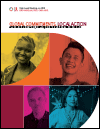
Resource | Publications,
Four decades after the first cases of AIDS were reported, new data from UNAIDS show that dozens of countries achieved or exceed the 2020 targets set by the United Nations General Assembly in 2016—evidence that the targets were not just aspirational but achievable.
The report shows that countries with progressive laws and policies and strong and inclusive health systems have had the best outcomes against HIV. In those countries, people living with and affected by HIV are more likely to have access to effective HIV services, including HIV testing, pre-exposure prophylaxis (medicine to prevent HIV), harm reduction, multimonth supplies of HIV treatment and consistent, quality follow-up and care.

Resource | Publications,
This Fast-Track City Strategic Plan for Battambang is the first provincial/city-level HIV strategy developed in Cambodia. As a matter of principle, the Fast-Track strategy aimed to be in line with the priorities and targets set out by the National AIDS Authority (NAA) and the National Centre for HIV/AIDS, Dermatology and STD (NCHADS), especially the 95-95-95 targets and the aim to end AIDS as a public health threat by 2025. These targets and priorities were then translated and adapted to the specific situation of Battambang Province in general, and to Battambang City in particular.
This strategic plan will be useful guidance for the HIV response in Battambang, helping to ensure Battambang is reaching the 95-95-95 targets and ending AIDS as a public health threat by 2025 in line with RGC’s commitment.
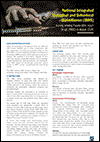
Resource | Fact Sheets,
NCASC conducted a nation-wide descriptive cross-sectional survey among people who inject drugs (PWID) in all Provinces of Nepal to generate both national and subnational HIV estimates.

Resource | Publications,
The purpose of this publication is to provide guidance for professionals working in both governmental and non-governmental organisations (NGOs) offering comprehensive care for women who use drugs and experience gender-based violence (GBV).
The guide is also intended for use by organisations involved in harm reduction, HIV prevention, treatment, care and support, and by those that undertake to address and respond to gender-based violence against women.
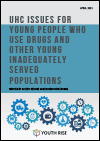
Resource | Publications,
Achieving Universal Health Coverage (UHC) is a goal we should all be striving for. Across the world, countless people are suffering unnecessary harm and death as a result of lack of access to affordable, necessary healthcare. While all of us suffer to varying degrees when healthcare is not universally available, it is the most marginalized in our societies who are impacted the most. As a young transgender woman who uses drugs my communities are among those most impacted by lack of access to healthcare. Young Inadequately Served Populations (ISPs), particularly in the Global South, are the communities who are going to continue to be left behind if we do not achieve UHC.





